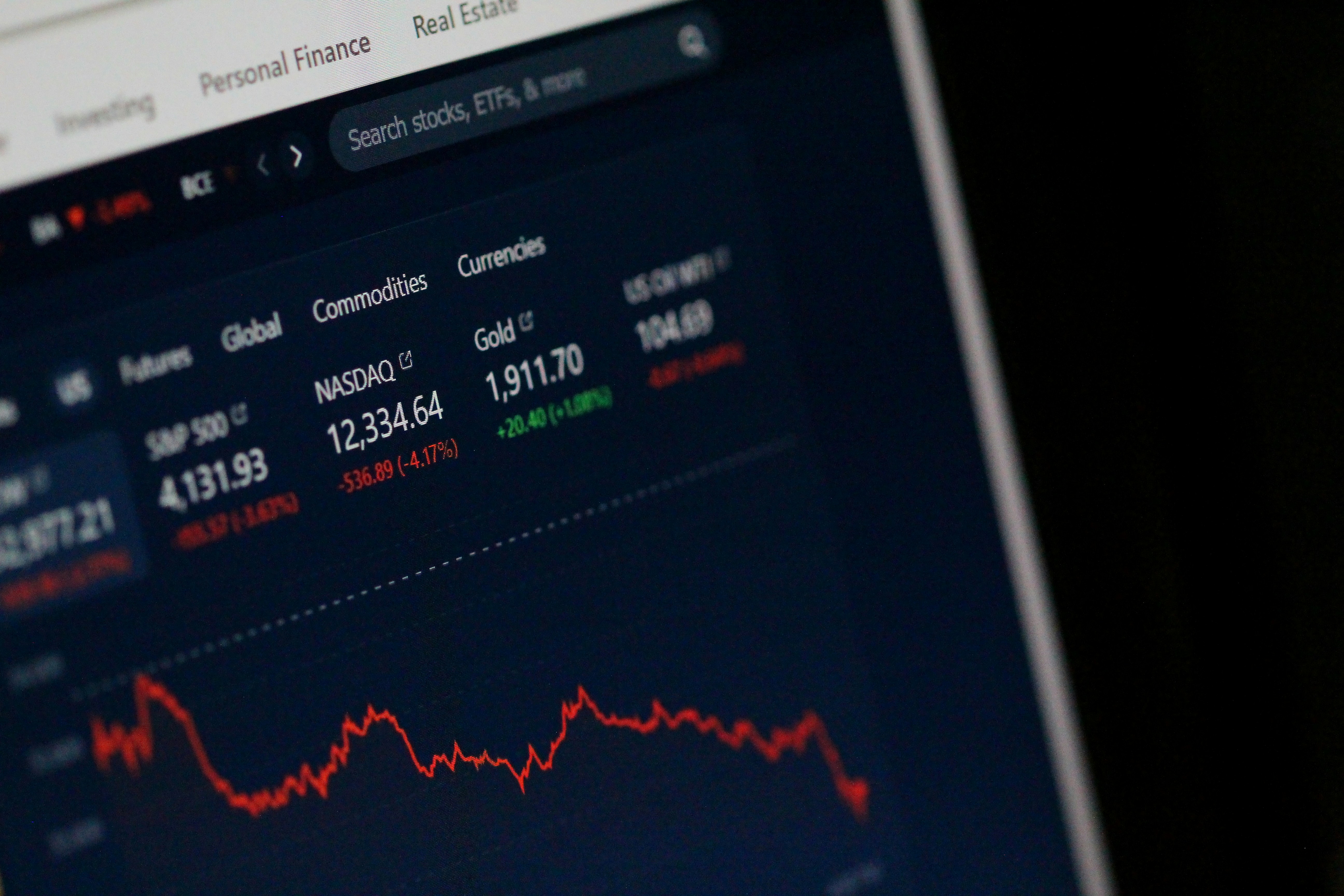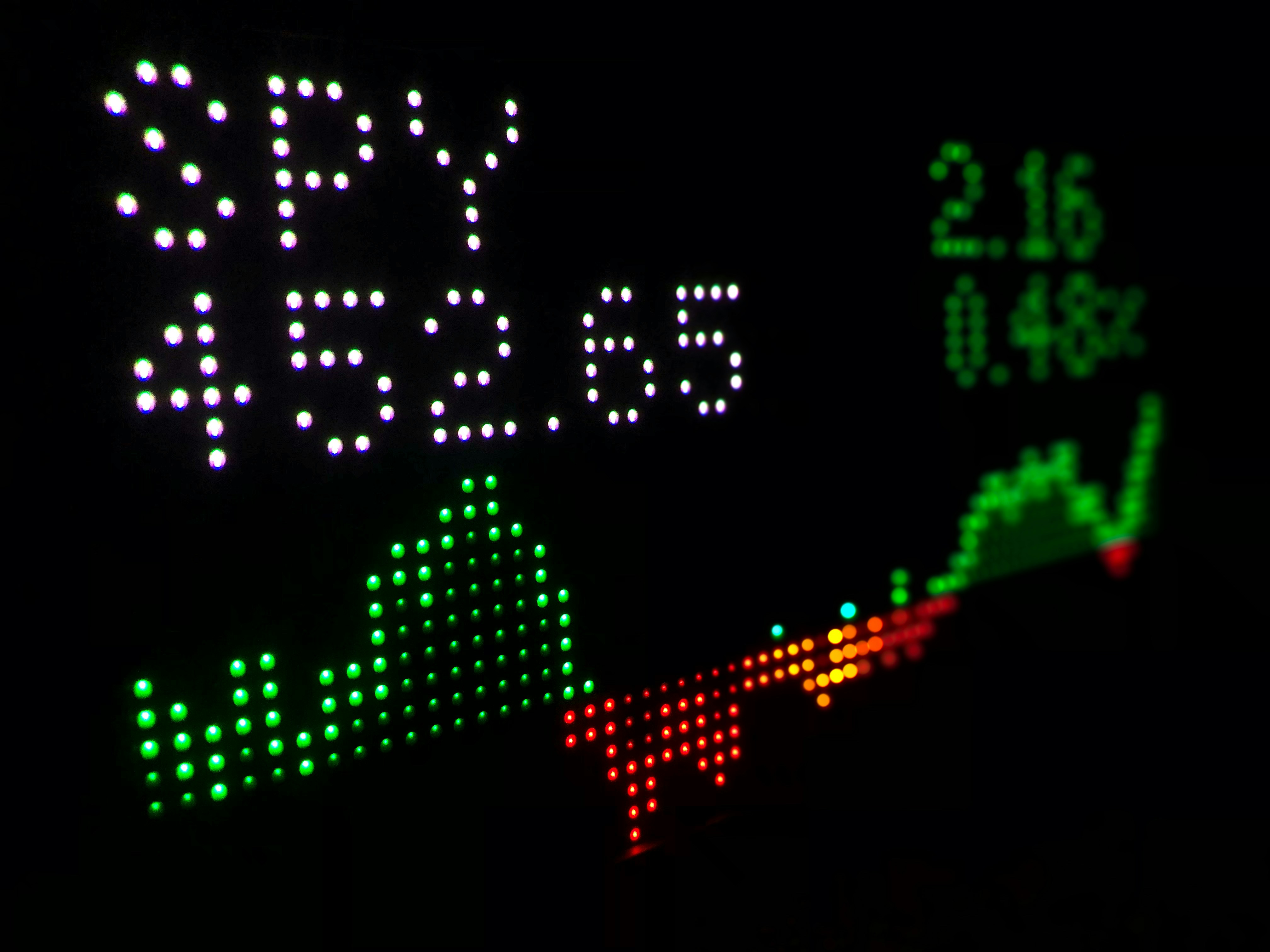
Introduction
Stock futures are financial contracts that obligate the buyer to purchase, and the seller to sell, a specific quantity of shares at a predetermined price on a specified future date. These instruments are traded in various exchanges and are primarily used by investors to hedge against potential losses in their stock portfolios or to speculate on future price movements. Unlike traditional stocks, which confer ownership in a company and are often subject to dividends, stock futures are derivative instruments that derive their value from the underlying asset, typically the stocks of publicly traded companies.
One of the principal differences between stock futures and traditional stock investments is the manner in which transactions are settled. Stock futures are cash-settled, meaning that at the expiration of the contract, the difference between the initial price and the market price of the asset will determine the profit or loss, rather than the actual shares changing hands. This feature allows for greater liquidity and flexibility for traders, as it can eliminate the need for large initial capital investment to purchase stocks outright. Furthermore, stock futures allow market participants to leverage their positions, as they require only a fraction of the total contract value to enter a position, thereby potentially increasing both the risk and the reward associated with their trades.
In contrast to other financial instruments, such as options and ETFs, stock futures provide direct exposure to the underlying asset, making them a popular choice for investors looking to capitalize on market movements without acquiring actual shares. By understanding how stock futures operate, investors can better grasp the intricacies of the financial markets and make informed decisions whether they aim to hedge against risks or pursue speculative opportunities.
Analysis of Recent Market Trends
The landscape of stock futures has experienced notable shifts recently, primarily driven by several key market trends. An examination of economic indicators reveals an intriguing correlation between market surges and the increase in stock futures trading. One of the most significant factors contributing to this rise is the positive performance of major stock indices, which has instigated a surge in investor confidence. When the stock market indicates strength through high closing numbers, it tends to prompt investors to engage in futures trading, anticipating continued growth.
Furthermore, recent data points suggest increased volatility, which has historically been a catalyst for futures market activity. With traders seeking to hedge against potential downturns or capitalize on price fluctuations, the volume of trading in stock futures has risen. This increase is often accompanied by a change in investor sentiment, wherein bullish views can lead to aggressive trading strategies in the futures market.
Additionally, macroeconomic indicators such as low unemployment rates, strong consumer spending, and robust corporate earnings reports contribute to heightened investor optimism. These factors significantly influence stock market behavior and, invariably, the stock futures market. As investors interpret these dynamics, they are more likely to allocate their resources into futures, anticipating further upward momentum in indices.
The recent uptick in trading activity can also be attributed to advancements in technology and the accessibility of futures trading platforms. The proliferation of online brokerage services has empowered a broader segment of the population to participate in futures markets, further driving demand and competition.
Overall, the interplay of positive market performance, economic indicators, investor sentiment, and technological advancements has played a critical role in the current rise in stock futures, shaping a landscape ripe for trading opportunities.
Factors Influencing Stock Futures
Stock futures are a crucial aspect of financial markets, providing investors with insights into expected future performance based on various influences. Numerous factors play a significant role in determining the movement and pricing of stock futures. Understanding these variables is essential for investors aiming to navigate market fluctuations effectively.
Economic data releases are one of the primary factors influencing stock futures. Reports such as unemployment rates, gross domestic product (GDP), and consumer price index (CPI) serve as key indicators of economic health. A better-than-expected jobs report, for instance, may lead to a positive outlook for stock futures, reflecting investor confidence. Conversely, disappointing economic data can trigger a downward adjustment in futures, indicating caution among investors.
Geopolitical events also significantly impact stock futures. Unforeseen incidents such as political unrest, trade negotiations, or military conflicts can lead to heightened uncertainty in the markets. For instance, tensions in a key region may result in volatility in global markets, influencing stock futures in various sectors. Investors often react swiftly to such news, adjusting their expectations of future stock performance based on how these geopolitical developments may affect economic conditions.
Global market influences represent another critical factor in shaping stock futures. The interconnectedness of global financial markets means that movements in one region can resonate across others. For example, if key international markets experience gains or losses, this can impact investor sentiment domestically, thus influencing stock futures. Traders often analyze global trends, harnessing data to gauge potential impacts on their portfolios.
In conclusion, economic data releases, geopolitical events, and global market influences collectively shape the landscape of stock futures. Understanding these factors not only empowers investors but also enhances the ability to make informed decisions in a dynamic market environment.
Impact of Economic Reports
Economic reports play a significant role in shaping investor expectations and influencing stock futures. Various indicators, such as employment data, inflation rates, and Gross Domestic Product (GDP) growth, serve as critical barometers for the overall health of the economy. When these reports are released, they can catalyze immediate reactions in the stock market, including futures trading.
Employment data, particularly non-farm payroll reports, provide insights into job growth and unemployment rates, which are vital for gauging economic performance. For instance, if a report demonstrates increased job creation and declining unemployment, it often boosts investor confidence, leading to a surge in stock futures. Conversely, disappointing employment numbers can dampen market sentiment, resulting in a decline in futures.
Inflation rates are another crucial economic metric affecting stock futures. When inflation is low, central banks may consider maintaining or reducing interest rates to support economic growth. This can result in a favorable environment for equities, causing stock futures to rise. On the other hand, unexpected spikes in inflation may trigger fears of tighter monetary policy, which can lead to a downturn in futures prices.
GDP growth is also foundational in shaping investor perceptions of economic stability and expansion. Strong GDP growth often correlates with robust corporate earnings, leading to optimism among investors regarding stock market performance. Historical examples, such as the post-recession recovery phase following the 2008 financial crisis, illustrate how positive GDP growth can lead to significant upward movements in stock futures as investor sentiment improves.
In summary, the interplay between economic reports and stock futures is complex yet vital. Understanding how employment data, inflation rates, and GDP growth influence investor expectations can provide clarity on market movements and help investors make informed decisions regarding futures trading.
Investor Strategies in Responding to Futures Movements
The fluctuations in stock futures can significantly influence investment strategies, and savvy investors continually adapt their approaches to mitigate risks and capitalize on potential gains. One prevalent strategy is to buy into stocks that are positively affected by rising futures. As stock futures indicate potential upward movement in the market, investors may seek to acquire shares of companies expected to benefit from this surge. This method hinges on the principle of momentum investing, where traders capitalize on the market’s upward trend to maximize profit opportunities.
In addition to direct stock purchases, investors often consider adjusting their portfolios in response to futures movements. This adjustment may involve reallocating assets among various sectors or asset classes to maintain a balanced risk profile. For instance, if futures data suggest a robust performance in technology stocks, investors might increase their holdings in tech-related equities while reducing positions in underperforming sectors. Such strategic rebalancing not only reflects the evolving market landscape but also aids in aligning the investment portfolio with the investor’s risk tolerance and financial goals.
Another sophisticated approach to responding to rising stock futures is the use of options. By employing options strategies, investors can hedge against potential losses while positioning themselves to profit from future market movements. For example, purchasing call options allows investors to benefit from upward price movements in a stock without committing significant capital upfront. Alternatively, put options can serve as insurance against declines in stock prices, thus managing the inherent risks associated with stock market investing.
Ultimately, the key to successfully navigating the complexities of stock futures lies in a well-formulated strategy that emphasizes risk management. By effectively leveraging buying opportunities, portfolio adjustments, and options trading, investors can enhance their chances of achieving favorable returns in a volatile market climate.
Impact on Individual Stocks and Sectors
The fluctuations in stock futures often create a ripple effect throughout the stock market, influencing individual stocks and entire sectors in a variety of ways. When stock futures rise, it typically signals positive sentiment among investors, which can lead to increased buying pressure across the board. However, certain sectors tend to experience these effects more profoundly than others, depending on prevailing economic conditions and market expectations.
Historically, cyclical sectors such as technology, consumer discretionary, and financials are among the most responsive to bullish futures trends. For instance, advancements in technology can drive significant upward momentum in tech stocks, particularly when futures indicate optimism for economic growth. Similarly, consumer discretionary stocks benefit greatly when investor confidence rises, as consumers are more likely to spend in a favorable market environment. Financial institutions also reap rewards as increased trading activity boosts their revenues.
Conversely, defensive sectors, such as utilities and consumer staples, usually experience less volatility in response to stock futures. These sectors tend to attract investors seeking safety during uncertain times, and their contributions to a market rally may be more subdued. However, during a robust economic recovery indicated by rising stock futures, even these sectors can witness an uplift as broader market sentiments spill over into traditionally stable stocks.
Sector rotation is also a notable phenomenon during periods of rising stock futures. As investors shift their focus towards sectors poised for growth, capital tends to flow in and out of various industries. This rotation not only highlights investor optimism but also illustrates the dynamic nature of the market, where timely adjustments based on futures data can yield significant advantages for investors seeking to maximize their returns.
Global Economic Impact
The interconnectedness of global economies has been substantially emphasized in recent years, particularly as the rise in U.S. stock futures reflects broader market dynamics. Movements in U.S. stock markets often resonate on a global scale, influencing investor sentiment worldwide. When U.S. markets surge, the increase in stock futures can lead to heightened confidence among international investors, triggering reactions in foreign markets.
One primary reason for this phenomenon is the role of the U.S. dollar as a global reserve currency. An upswing in U.S. stock futures signals economic stability or growth potential, encouraging foreign investments in U.S. assets. Consequently, this influx of investment can enhance liquidity in the global markets, compelling other nations to adjust their economic strategies to remain competitive. Countries with close trade relations with the U.S. often observe their markets aligning with American trends, leading to increased market volatility as they respond to the fluctuations of the U.S. economy.
Additionally, the rise in U.S. stock futures tends to affect central bank policies across the world. As U.S. interest rates and economic performance improve, other countries may feel the pressure to modify their monetary policies to maintain favorable investment climates. This chain reaction can foster a climate of heightened speculation, impacting local markets as investors seek to capitalize on perceived opportunities driven by U.S. economic indicators.
Moreover, commodities and currencies tend to respond significantly to U.S. stock market movements. For instance, commodities priced in dollars may experience shifts in demand as American stock indices rise, affecting prices and availability on a global scale. Consequently, the implications of rising U.S. stock futures extend well beyond national borders, demonstrating the intricate web of global economic interdependencies and influencing investor behavior abroad.
Technical Analysis of Futures Trends
Technical analysis plays a vital role in understanding stock futures, allowing traders to make informed decisions based on market trends and price movements. By utilizing various charting techniques and indicators, investors can gauge the behavior of stock futures and predict potential price changes. One of the fundamental aspects of technical analysis is price charts, which represent historical price movements over specified periods. Traders often analyze these charts to identify patterns such as head and shoulders, double tops, or trends indicative of future price action.
Among the popular indicators used in technical analysis is the Moving Average (MA). This tool helps smooth out price data over time to identify trends more readily. Traders often employ the Simple Moving Average (SMA) or the Exponential Moving Average (EMA) to ascertain the direction of stock futures. For instance, when the price crosses above a moving average, it could signal a bullish trend, whereas a drop below may suggest a bearish sentiment.
Another essential indicator is the Relative Strength Index (RSI), which measures the speed and change of price movements to determine overbought or oversold conditions in the market. An RSI above 70 may indicate that stock futures are overbought, while readings below 30 suggest they are oversold. Such insights help traders decide when to enter or exit positions.
Additionally, Volume is a crucial component in technical analysis, as it provides insights into the strength of a price move. A surge in volume accompanying a price increase can affirm the trend’s strength, while low volume may indicate a lack of conviction among traders. Other indicators such as Bollinger Bands, MACD, and Fibonacci retracement levels also provide valuable insights when analyzing stock futures.
By integrating these technical analysis techniques, traders can enhance their strategies and increase their likelihood of success in the volatile stock futures market. Understanding these indicators, along with consistent market observation, fosters a comprehensive approach, allowing for more calculated trading decisions.
Conclusion and Future Outlook
In summary, the discussion surrounding the recent rise in stock futures following market surges highlights a myriad of factors that contribute to this phenomenon. As we have explored, stock futures serve as a vital indicator of market sentiment and investor expectations, and their uptick can often translate into broader economic implications. Key aspects such as increased investor confidence, anticipated corporate earnings, and macroeconomic stability have been closely tied to the behaviors observed in stock futures amidst market fluctuations.
Looking ahead, several expert analysts speculate that if this trend continues, it could signify a bullish trend in the equity markets. Some market experts suggest that as long as fundamentals remain strong—bolstered by favorable economic indicators—the upward trajectory of stock futures may persist. This could encourage a more robust investment climate, leading to increased capital inflows into the markets. Moreover, as businesses demonstrate resilience post-pandemic, investor optimism may further catalyze stock price advancements, ultimately reflecting positively on futures markets.
Nonetheless, potential headwinds, such as global geopolitical tensions, inflation concerns, and shifts in monetary policy, could pose challenges to this optimism. Consequently, market participants and analysts alike urge a cautious approach, emphasizing the necessity of continuously monitoring these factors. As investors strategize for the future, the interplay between stock futures and market performance will remain critical in decision-making processes. It is prudent for investors to stay informed and prepared for potential volatility, as shifts in economic conditions could significantly impact stock futures moving forward.






